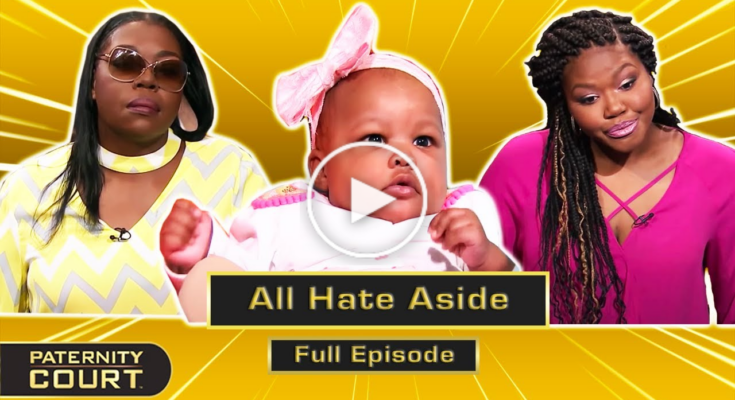The courtroom drama that unfolded in the case of A’Miracle sheds light on the intricate interplay between paternity disputes, loss, and the pursuit of truth. Against the backdrop of personal emotions and legal proceedings, this article delves into the multifaceted dimensions of this case, highlighting the complexities of grief, doubt, and the quest for identity.
The proceedings commence with the heart-wrenching testimony of Ms. Phillips, A’Miracle’s mother, who recounts the momentous day when she was in the hospital, ready to give birth. Her emotions are palpable as she reveals that despite knowing the father was gone, she yearned for his presence, hoping against hope that he would walk through the doors. Her statement, “I loved that man. I always loved him. He knew that,” encapsulates the profound love and grief she carries within her. This poignant revelation encapsulates the emotional turmoil that underpins the entire case, reflecting the raw wounds that continue to fester even in the midst of legal proceedings.
The court takes an unexpected turn when Daniel Randall, A’Miracle’s uncle and the late father’s brother, takes the stand. Rather than confirming the paternity, Randall introduces an element of doubt into the narrative. He divulges that his late brother had his own reservations and expressed uncertainty about whether A’Miracle was indeed his child. This revelation peels back the layers of familial dynamics and unresolved queries following the father’s demise. Randall’s testimony serves as a stark reminder that paternity disputes are not just matters of genetics, but they also carry a heavy emotional burden, often exacerbated by the specter of loss.
Central to the case is the visual resemblance between A’Miracle and her father. Ms. Phillips ardently asserts that the child is an embodiment of her late partner, while Ms. Williamson counters with skepticism. A heated exchange ensues, marked by passionate outbursts, mirroring the emotional intensity surrounding the matter. The courtroom becomes a stage for the convergence of conviction and skepticism, highlighting the high stakes involved for all parties. The clash of visual resemblance and emotional turmoil underscores the deeply personal nature of paternity disputes, where perceptions and beliefs intertwine in a complex tapestry of emotions.
The crescendo of the trial culminates in the presentation of DNA results, offering a scientific perspective on the paternity question. With a 99.8% relatedness between A’Miracle and Ms. Williamson, Judge Lake emphatically states, “It’s your grandbaby.” This scientific verdict injects an element of clarity into the case, elevating it beyond personal emotions. Judge Lake’s emphasis on unity and empathy resonates, steering the proceedings toward a potential path of reconciliation. This moment marks the intersection of science and emotion, where objective truth intersects with the subjective experiences of grief and longing.
The saga of A’Miracle’s paternity case serves as a microcosm of the intricate emotional and legal landscapes that often accompany such disputes. Judge Lake’s admonition, “We’re not going dark when we just got to the light,” reverberates, urging all parties to embrace the opportunity for healing and unity. A’Miracle’s story becomes a canvas upon which the human experience of loss, doubt, and eventual resolution is vividly portrayed. The poignant yet unresolved emotions displayed throughout the case are emblematic of the ongoing journey that individuals navigate after experiencing profound loss.
The case of A’Miracle underscores the complexity of intertwining legal proceedings with deeply personal emotions. As the court’s gavel falls, the echoes of this emotional journey linger, carrying a powerful reminder that empathy and understanding must navigate alongside facts and evidence. The convergence of grief and the pursuit of truth within A’Miracle’s narrative reminds us of the importance of embracing compassion and unity, even in the face of the most challenging circumstances. The resolution of A’Miracle’s case leaves us contemplating the delicate balance between justice and empathy, shedding light on the intricate dance between legal resolution and the human experience.



